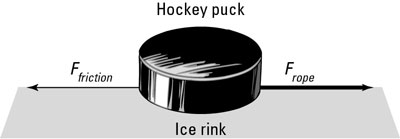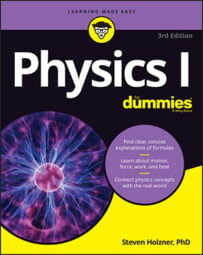In physics, because of Newton’s third law, whenever you apply a force to an object, say, by pulling it, the object applies an equal and opposite force on you. Here’s an example that lets you work out how much force you’re subject to when you drag something along. For fantasy physics purposes, say that a hockey game ends, and you get the job of dragging a 31-slug hockey puck off the rink. You use a rope to do the trick, as shown in the figure.

Physics problems are very fond of using ropes, including ropes with pulleys, because with ropes, the force you apply at one end is the same as the force that the rope exerts on what you tie it to at the other end.
In this case, the massive hockey puck will have some friction that resists you — not a terrific amount, given that it slides on top of ice, but still, some. Therefore, the net force on the puck is
Because Frope is greater than Ffriction, the puck will accelerate and start to move. In fact, if you pull on the rope with a constant force, the puck will accelerate at a constant rate, which obeys the equation
Because some of the force you exert on the puck goes into accelerating it and some goes into overcoming the force of friction, the force you exert on the puck is the same as the force it exerts on you (but in the opposite direction), as Newton’s third law predicts:

